Good Morning P6/7!
I can’t believe we are into June already! How crazy it that?
I am missing you all lots and lots and hope you are all safe and well.
LITERACY:
Starter: I can predict what the story might be about.
This morning, I would like you to read Ch 1 and 2 of JK Rowling’s new book Ickabog. Before reading, from the title, what do you think this book could be about?
https://www.theickabog.com/king-fred-the-fearless/
Or you could choose a book from the Epic site using our class code idt2922.
Activity:
Character Description
I can describe a characters looks and personality using clues from the text.
Both chapters contain lots of description about Fred the Fearless, Lord Spittleworth and Flapoon and little 5 year old Bert and mentioning of the Ickabog.
Think about all of the information we are given by JK Rowling about for example ‘Fred the fearless’ looks
Eg. “lovely, yellow curls, fine sweeping moustaches”
As well as clues about his personality:
Eg. “He had once managed to catch a wasp all by himself, if you didn’t count five footmen and the boot boy.”
Therefore, did Fred catch the wasp alone? How many people did it take? What does that suggest about Fred and his title of “Fred the Fearless”?
Can you draw and use adjectives to describe a character?
(This can be for a character in a different book you are reading if you wish).
Challenge
Can you use your own words to describe the characters and then use quotations from the book using JK Rowlings words to back you up?
Plenary:
Show a family member, friend over the phone or email to myself your work and ask them to count how many descriptions of looks you managed and how many are about their personality.
dpark@woodlands.n-lanark.sch.uk
MATHS
This week in maths we are going to be looking at measure, in particular, measure associated with length so we’ll be using mm, cm, m and Km.
Starter:
Which units do we use?
There are many different ways of measuring things. Each situation when you measure something might need a different unit to make it easy to understand.
Many of the units we use in the metric system are based on being 10, 100 or 1000 times bigger or smaller than another unit. Time is an exception to this.
We can use the names to give us a clue about how much bigger or smaller something is:
- kilo = 1000 times bigger
- centi = 100 times smaller
- milli = 1000 times smaller
For example:
One kilo metre is 1000 times bigger than a metre. There are one thousand metres in a kilometre.
One centimetre is 100 times smaller than a metre. There are one hundred centimetres in a metre
Watch this video to help you:
Activities- I can compare measurement in m, cm and mm
Challenge:
Plenary:
Millimetres in the kitchen. Did you know that the building trade use mm as the standard unit. Look at the cupboards in their kitchen. Using an estimate reference (e.g. visualising a 30 cm ruler or knowing that the longer side of a piece of A4 paper is about 30 cm), estimate and then measure the size of the kitchen cupboards. Record the different dimensions in cm and then convert to mm.
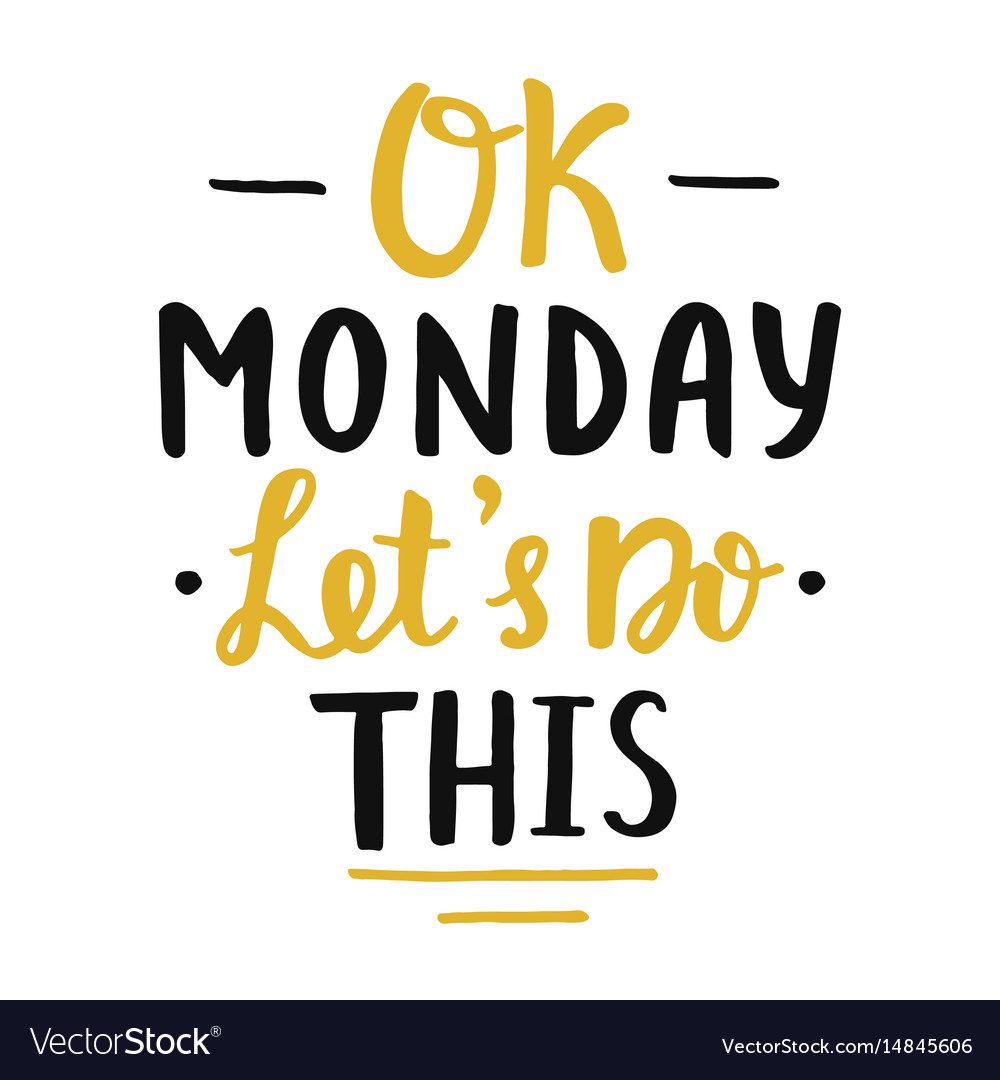
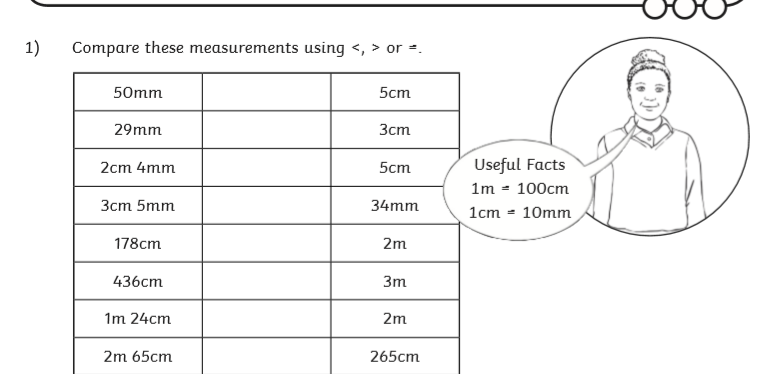
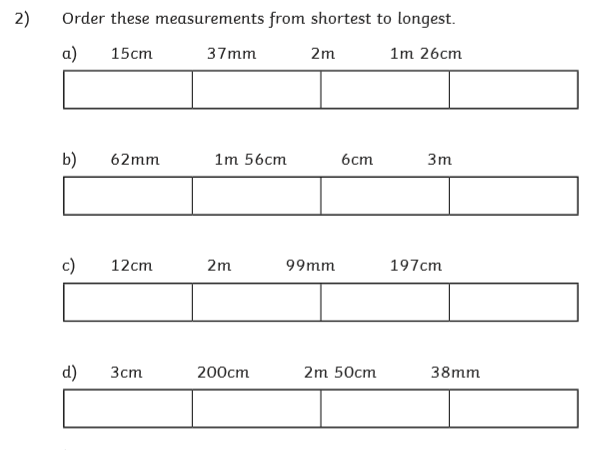
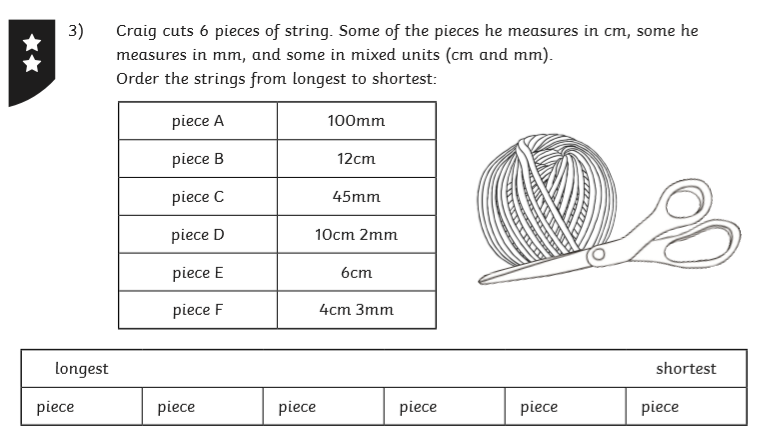
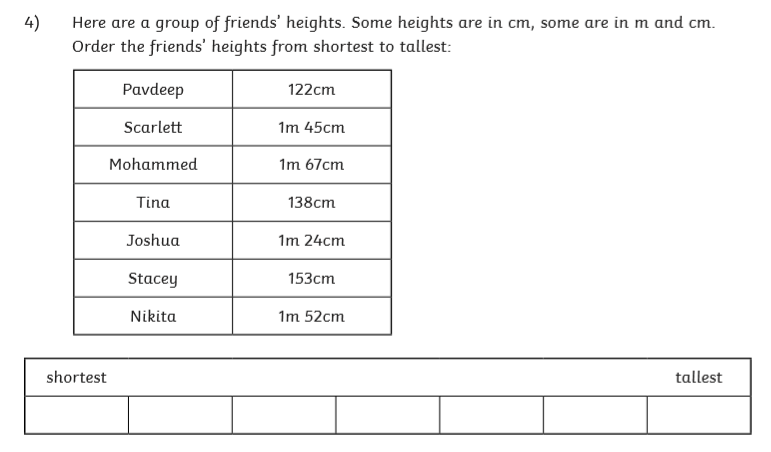

Ava rushed off after finishing her work today to spend the day in the garden but thought I’d leave a wee comment to say thanks for the daily work helping us keep some sort of normality through all this xx Ava enjoyed Ickabog chapters today and task 👍🏻
Quite right make the most of the weather! Thank you so much, that is very kind of you to say. I am glad it is helping keep a little bit of normality. I hope the cheesecake turned out well the other week too!